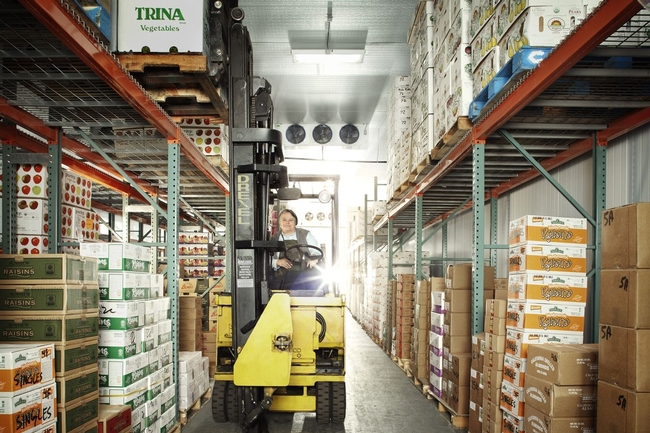Farm to fork, and all that's in between
* - Updated 8/6/2012
As the local food movement scales up and consumers demand information about where their food comes from, more grocers and institutions are seeking wholesale access to local produce. To make the connection between producers and retail sellers, distribution networks are taking on an increasingly important role in the local food system. More and more, farmers are becoming part of values-based supply chains and ‘food hubs’ to pool their product with that of other farmers and move food more easily to market and complete the chain from farm to fork (*).
New reports released by the UC Sustainable Agriculture Research and Education Program (SAREP) show that, while food hubs help close the gap in distribution efforts, farmers should invest carefully. UC SAREP has created a Farmer Toolkit for those interested in taking part in a food hub.
“We wanted to suggest some questions farmers should consider before getting involved with an enterprise,” said Gail Feenstra, academic coordinator at UC SAREP (*).
“When food hubs are working,” Feenstra said, “the farmer gets a higher price for their product, and everybody along the supply chain benefits. Consumers get the satisfaction of knowing where their food comes from, and the food is good quality” (*).
But the challenges of food hubs are steep. While food hubs often succeed at keeping the social and environmental values of their products front and center (that they are organic, local, or grown by family farmers, to name a few values), business plans for long-term success are not always part of the planning process (*).
Traditional distribution centers that have been the standard in produce distribution are incredibly well established compared to young food hubs. In researching existing distribution networks, “we found that there are really long-standing partnerships amongst distributors,” says Feenstra. “They go back decades and generations.”
For farmers looking to keep their social and environmental values embedded in their products, abandoning traditional distribution networks may not be the way to succeed. Rather, “creative partnerships between conventional players and more alternative folks may be a better model. In cases where you can create cooperative of growers in which they own the process and they’ve got good management, it’s a slow build up, it can’t happen overnight. But they can succeed,” Feenstra said.
The farmer toolkit is meant to give farmers a better sense of how to make that success happen and how to bring the value of sustainably produced food into the supply chain.
The farmer toolkit and more information on values-based supply chains can be found at the UC SAREP Web site.
Farmer Toolkit



Posted by Ermon Idrus on July 31, 2012 at 3:15 PM